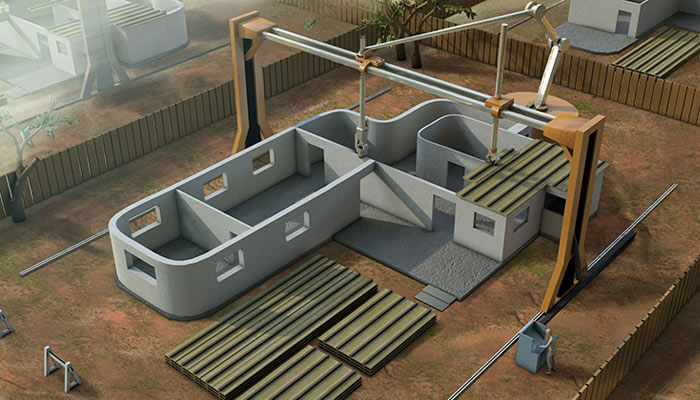The Future of Infrastructure with 3D Manufacturing Breakthroughs

As we progress through the advancing sphere of technology, one discovery stands notably in the industry of infrastructure: 3D manufacturing. This groundbreaking technology is transforming the way buildings and frameworks are envisioned and built, introducing a new era of effectiveness, environmental responsibility, and innovation.
Transforming Infrastructure: One Layer at a Time
The adoption of 3D fabrication in construction delivers numerous game-changing gains. Primary among these is the drastic minimization in substance excess. Conventional infrastructure approaches typically result in considerable excess resources that contribute to sustainability-related pollution. In contrast, 3D printing utilizes a precise layer-by-layer method, employing only the necessary quantity of substance and thus reducing excess significantly.
Another noteworthy benefit is the immense decline in construction duration. Undertakings that historically demand extended durations can be finished in a fraction of the time with 3D printing technologies. This time reduction is due to the mechanized mechanism of 3D devices that can operate around the clock without manual involvement, significantly shortening overall development schedules.
Moreover, 3D printing introduces prospects for building sophisticated, custom designs at no added cost. The flexibility of 3D devices enables for detailed designs and forms to be developed that would either be extremely expensive or impossible to attain with standard construction approaches. This function not only elevates design beauty but also allows designers to maximize plans for better efficiency and durability.

Cutting Expenditures and Improving Accessibility
Budget minimization is yet another major benefit introduced by 3D fabrication in building. By reducing manpower costs and shortening the timeframe necessary to finish undertakings, the complete cost associated with building structures is minimized. Additionally, cheap 3D printing machines are growing more attainable, putting this method within reach of smaller companies and independent creators eager to explore its capabilities.
The budget-friendliness of these units also opens opportunities for innovation in related sectors such as clothing production. While mainly known in infrastructure sectors, the reach of 3D fabrication extends into various areas including design. Here, creators explore with 3D manufactured attire, challenging design boundaries and reshaping material manipulation while benefiting from minimal manufacturing expenses.
A Green Future Powered by Technology
Environmental responsibility is another foundation of this method’s appeal in the building sector. 3D manufacturing supports a eco-conscious method to development by minimizing material waste and power usage. Furthermore, it facilitates the use of eco-friendly resources like reclaimed polymers or blended blends, which additionally lowers the carbon footprint of this conventionally high-emission industry.
The international movement to green methods discovers a powerful partner in 3D fabrication technologies, possibly reshaping how structural guidelines and requirements are formulated going forward. By integrating these innovative processes, the infrastructure industry advances toward reaching sustainable business practices.
Bringing Dreams to Reality
Visualize public centers in underprivileged neighborhoods being built within weeks to address pressing demands or visionaries crafting wonders reflecting organic patterns that merge effortlessly into their surroundings – such scenarios are not just hypothetical but are rapidly becoming feasible through 3D manufacturing.
While these achievements mark just the onset, they hint at a future where construction integrates perfectly with both societal aspirations and environmental responsibility.
If we proceed on this path, building will not only signify the physical formation of environments but also symbolize a dedication to forward-thinking thinking and sustainable existence. Connecting imagination with usability, 3D manufacturing is set to redefine our tangible environment in forms we are just beginning to understand.
Through constant advancements and an acceptance of these cutting-edge approaches, our built environments will surely evolve into representations of human ingenuity powered by the precision and boundless potential of 3D printing.
To read more about may in soi nhua browse this popular web page: read more
